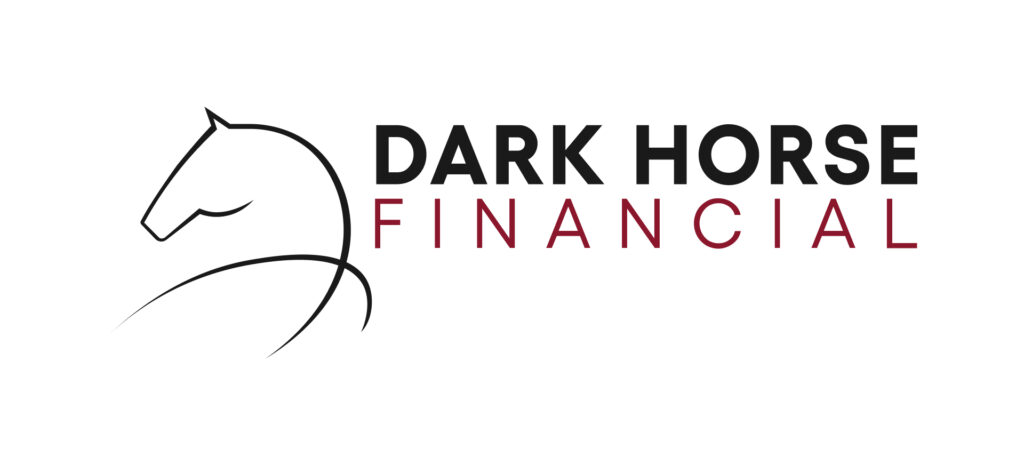Key Takeaways
- Working capital is the difference between a business's current assets and liabilities. Maintaining positive working capital is important for business stability and growth.
- Businesses face working capital challenges due to a number of reasons, including delayed customer payments, seasonal fluctuations, emergencies, and poor cash flow.
- To help with maintaining working capital, businesses can improve accounts receivable management, manage the finances with cash flow forecasts and other tool, and utilise working capital loans.
- Working capital loans help manage cash flow gaps, inventory purchases, expansion, and emergency expenses.
- Loan options include traditional term loans, a line of credit, overdrafts, invoice financing, and private lending.
- Factors like your borrowing needs, cost, repayment flexibility, and credit history play a role in selecting the best financing option. Contact lending experts like Dark Horse Financial to access the best rates and terms for your loan.
For many small business owners, maintaining a healthy cash flow is one of the biggest challenges in managing day-to-day operations. Having access to the right working capital solutions for small business can make all the difference. This article explores the various working capital funding options available, helping you understand which solutions might be the best fit for your company.
What is Working Capital?
Working capital is the difference between a company’s current assets (such as cash, accounts receivable, and inventory) and its current liabilities (such as accounts payable and short-term debts). Simply speaking, working capital represents the resources a small business has on hand for daily expenses.
A positive working capital balance shows that a business has enough assets to cover its short-term liabilities, allowing for smooth operations and growth. A negative working capital balance, on the other hand, can lead to cash flow problems and financial instability.
Why Is Working Capital Important to Small Businesses?
Working capital is an important financial metric for businesses. Having (or not having) enough working capital determines a business’s short-term financial health and operational efficiency. Having sufficient working capital ensures that a business can cover day-to-day expenses, handle unexpected challenges, and pursue growth opportunities.

Common Working Capital Challenges for Small Businesses
Small businesses often struggle with maintaining enough working capital. Several internal and external factors can create cash flow gaps, making it difficult for businesses to operate efficiently. Below are some of the most common working capital challenges small businesses face:
- Delayed Customer Payments and Invoicing Issues: Late payments from customers can disrupt cash flow, leaving businesses unable to cover their own expenses.
- Seasonal Revenue Fluctuations: Businesses in industries like retail, tourism, and agriculture often experience seasonal demand swings. High-revenue periods are followed by slow seasons, making it difficult to maintain working capital.
- Inventory Management Issues: Carrying too much inventory ties up working capital in unsold goods, while too little inventory can lead to missed sales opportunities and customer dissatisfaction.
- Unforeseen Expenses & Emergencies: Unexpected costs such as equipment breakdowns, legal fees, or emergency repairs can strain working capital. Additionally, economic downturns or sudden market shifts can reduce sales and cash flow.
- Rising Operational Costs: Inflation and increasing costs of rent, wages, utilities, and raw materials can squeeze working capital.
- Poor Cash Flow Management: Small businesses can mismanage cash flow by spending too quickly or failing to forecast financial needs. Inconsistent tracking of expenses, receivables, and payables can also lead to financial miscalculations.
Best Practices for Managing Working Capital
Effectively managing working capital is essential for sustaining business operations and ensuring long-term financial stability. Here are some best practices:
- Monitor Cash Flow Proactively: Regularly tracking income and expenses can help businesses anticipate shortfalls and take corrective action before financial issues arise.
- Improve Accounts Receivable and Payable Management: Encouraging early payments from customers while negotiating extended payment terms with suppliers can optimise cash flow.
- Control Operating Costs: Keeping overhead expenses in check and identifying cost-saving opportunities can improve profitability and working capital levels.
- Plan for Seasonal Variability: Businesses that experience seasonal fluctuations should develop cash reserves to handle lean periods.
- Utilise Working Capital Loans for Small Business: Businesses should use working capital loans to ensure they have enough working capital to cover seasonal periods, address emergencies, and grab time-sensitive opportunities.
What are Working Capital Loans?
A working capital loan is a type of financing designed to cover a business’s short-term operational needs, such as payroll, rent, inventory purchases, and other daily expenses. Unlike long-term loans used for large investments, working capital loans are intended to help businesses maintain smooth operations, especially during cash flow fluctuations. These loans can be structured in different ways depending on the specific needs of the business.

Types of Working Capital Loans for Small Business
Below are some of the most common options for working capital funding:
Term Loans
Term loans are one of the most common forms of working capital funding. The borrower will receive a lump sum, which must be repaid with interest over a specific period. Terms can range from months to a few years, with the borrower paying in regular instalments. Term loans are great for covering larger expenses and are easier to manage because repayments are predictable.
Overdrafts
Overdrafts provide a flexible credit facility that allows businesses to withdraw more money than they have in their accounts, up to a predetermined limit. You only pay interest on the amount you’ve overdrawn, not on the whole credit limit. This is a useful tool for managing short-term cash flow gaps and covering unexpected expenses. Unlike a traditional term loan, once the borrowed amount is repaid, it can be used again, that’s why it’s called a revolving line of credit.
Invoice Financing
Invoice financing, also known as accounts receivable financing, allows businesses to borrow money against outstanding invoices. This solution is ideal for businesses that have long payment cycles but need immediate cash flow. Lenders advance a percentage of their invoices’ value upfront and then charge their fees once the customer pays.
Private Lending
Private lending provides an alternative financing route for businesses that may not qualify for traditional bank loans. Private lenders typically offer faster approvals and more flexible terms but may come with higher interest rates. This type of financing can be useful for businesses needing immediate working capital without the rigorous process of conventional loans.
Choosing the Right Working Capital Solution
With so many solutions available, choosing the right small business working capital loan can depend on several factors:
- Repayment Flexibility: Some financing options, such as lines of credit and invoice financing, provide more flexibility than traditional loans.
- Cost of Borrowing: Contact Dark Horse Financial to access the best rates for working capital loans. We’ll compare interest rates, fees, and repayment terms to ensure you get the best deal for your loan.
- Credit Requirements: Businesses with strong credit scores may qualify for larger term loans, while those with less than perfect credit are more suited to private lending and bad credit loans.
- Security Requirements: Those with assets to pledge as security can go for secured loans or overdrafts, while those without can apply for unsecured working capital loans.
- Borrowing Needs: If you’re looking for funding for a large purchase (e.g. bulk inventory purchase), your best choice is a term loan. Meanwhile, if you’re looking for a financial safety net that you can use whenever needed, you can go for an overdraft.
In Summary
Access to the right working capital financing for small business can make a significant impact on growth, stability, and success. Whether opting for a term loan or an overdraft, small businesses must carefully evaluate their needs and financial situation to choose the best funding solution. For expert guidance on finding the best working capital funding solutions tailored to your business needs, reach out to our team.





